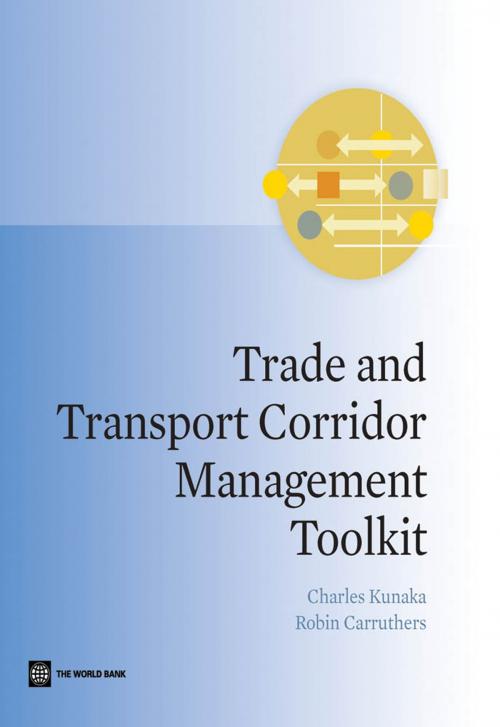Trade and Transport Corridor Management Toolkit
Business & Finance, Business Reference, Infrastructure, Industries & Professions, Industries| Author: | Charles Kunaka, Robin Carruthers | ISBN: | 9781464801440 |
| Publisher: | World Bank Publications | Publication: | May 7, 2014 |
| Imprint: | Language: | English |
| Author: | Charles Kunaka, Robin Carruthers |
| ISBN: | 9781464801440 |
| Publisher: | World Bank Publications |
| Publication: | May 7, 2014 |
| Imprint: | |
| Language: | English |
Trade and transport corridors—major routes that facilitate the movement of people and goods between regions and between countries—have existed for millennia. They enable regions and countries to offer high-capacity transport systems and services that reduce trade and transport costs by creating economies of scale. Regional corridors are particularly important to landlocked countries, often providing the only overland routes to regional and international markets. Despite a long and complex history, guidance is often lacking on how to design, determine the components to include, and analyze the impact of corridor projects. The Trade and Transport Corridor Management Toolkit fills this void. The Toolkit synthesizes the experiences of the World Bank and other development agencies in assessing, designing, implementing, and evaluating the impact of trade and transport corridor projects. It saves project developers the task of looking for the best available tools and ensures greater consistency to facilitate comparison and benchmarking. The Toolkit will also be of immense value to policy makers in provincial and national governments as well as regional economic institutions, for several reasons: • Corridors affect the space economy of countries; they are best developed with clear estimates of the spatial impacts that can be expected. • A corridor system has multiple components, including infrastructure (roads, railways, ports), transport and logistics services, and regulations; it is important to appreciate the linkages between them, particularly as the overall performance of a corridor is determined by the weakest component. • Many parties with varying interests and motivations have a stake in corridor development. The Toolkit argues for their full participation in corridor development processes and operations. The best functioning modern corridors in the world did not happen by accident; they are often the results of coordinated development and cooperation over many years. The general principles outlined in this Toolkit should help project teams, government officials, logistics service providers, and the trade community to better appreciate both the importance of good corridor project design and the challenges of, and possibilities from, improving corridor performance.
Trade and transport corridors—major routes that facilitate the movement of people and goods between regions and between countries—have existed for millennia. They enable regions and countries to offer high-capacity transport systems and services that reduce trade and transport costs by creating economies of scale. Regional corridors are particularly important to landlocked countries, often providing the only overland routes to regional and international markets. Despite a long and complex history, guidance is often lacking on how to design, determine the components to include, and analyze the impact of corridor projects. The Trade and Transport Corridor Management Toolkit fills this void. The Toolkit synthesizes the experiences of the World Bank and other development agencies in assessing, designing, implementing, and evaluating the impact of trade and transport corridor projects. It saves project developers the task of looking for the best available tools and ensures greater consistency to facilitate comparison and benchmarking. The Toolkit will also be of immense value to policy makers in provincial and national governments as well as regional economic institutions, for several reasons: • Corridors affect the space economy of countries; they are best developed with clear estimates of the spatial impacts that can be expected. • A corridor system has multiple components, including infrastructure (roads, railways, ports), transport and logistics services, and regulations; it is important to appreciate the linkages between them, particularly as the overall performance of a corridor is determined by the weakest component. • Many parties with varying interests and motivations have a stake in corridor development. The Toolkit argues for their full participation in corridor development processes and operations. The best functioning modern corridors in the world did not happen by accident; they are often the results of coordinated development and cooperation over many years. The general principles outlined in this Toolkit should help project teams, government officials, logistics service providers, and the trade community to better appreciate both the importance of good corridor project design and the challenges of, and possibilities from, improving corridor performance.















